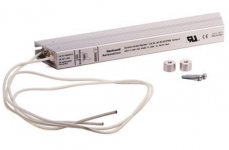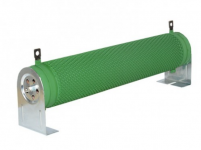We were planning to mount a small VFD braking reistor in a dusttight enclosure. We're in a Class II Div 2 environment.
It seems like we would have to increase our protection level to dust-ignitionproof per 502.120(B)(3). Am I reading this correctly? Dust-ignitionproof would require a NEMA 9 enclosure, right? I looked at the definition for dust-ignitionproof in Article 100 expecting to see NEMA 9 but it references ANSI/UL 1202-2013 instead. Does that point to NEMA 9? 502.120(B)(3) seems a little restrictive in that dust-ignitionproof is the only mitigation technique. 500.7 doesn't seem to apply. Does purging an enclosure make it dust-ignitionproof per ANSI/UL 1202-2013?
Are there any other parts of the code that modify the requirement in 502.120(B)(3)? 501.120(B)(3) is less restrictive. I'm suprised the same surfance temperature expemptions conditions do not apply to Class II. Or is there a more general section that would allow them to apply? Something like 500.8(A)(3)?
Thanks in advance,
It seems like we would have to increase our protection level to dust-ignitionproof per 502.120(B)(3). Am I reading this correctly? Dust-ignitionproof would require a NEMA 9 enclosure, right? I looked at the definition for dust-ignitionproof in Article 100 expecting to see NEMA 9 but it references ANSI/UL 1202-2013 instead. Does that point to NEMA 9? 502.120(B)(3) seems a little restrictive in that dust-ignitionproof is the only mitigation technique. 500.7 doesn't seem to apply. Does purging an enclosure make it dust-ignitionproof per ANSI/UL 1202-2013?
Are there any other parts of the code that modify the requirement in 502.120(B)(3)? 501.120(B)(3) is less restrictive. I'm suprised the same surfance temperature expemptions conditions do not apply to Class II. Or is there a more general section that would allow them to apply? Something like 500.8(A)(3)?
Thanks in advance,




